38 arithmetic sequence practice worksheet
› maths-games › daily10Daily 10 - Mental Maths Challenge - Topmarks Daily 10 is a primary maths resource for teachers of Years 1 to 6. It asks ten random questions on addition, subtraction, multiplication, division, fractions, ordering, partitioning, digit values and more. Ideal for use on a IWB and as a starter or plenary activity. › classroomresourcesClassroom Resources - National Council of Teachers of Mathematics When students become active doers of mathematics, the greatest gains of their mathematical thinking can be realized. Both members and non-members can engage with resources to support the implementation of the Notice and Wonder strategy on this webpage.
› arithmetic-sequenceArithmetic Sequence Worksheets - Math Worksheets 4 Kids This set of arithmetic sequence worksheets is meticulously designed by math experts that will immensely benefit 7th grade, 8th grade, and high school students. Students can get plenty of practice with a number of exercises like finding arithmetic sequence, identifying the first term, common difference and number of terms; finding the next three ...

Arithmetic sequence practice worksheet
thirdspacelearning.com › arithmetic-sequenceArithmetic Sequence - GCSE Maths - Steps, Examples & Worksheet An arithmetic sequence is an ordered set of numbers that have a common difference between each consecutive term. For example in the arithmetic sequence 3, 9, 15, 21, 27, the common difference is 6. An arithmetic sequence can be known as an arithmetic progression. The difference between consecutive terms is an arithmetic sequence is always the same. › find-nth-termFind the sequence and the nth term Worksheets and Solutions Objective: I know how to find the pattern and the n th term of a sequence. Fill in all the gaps, then press "Check" to check your answers. Use the "Hint" button to get a free letter if an answer is giving you trouble. › lessons › intermediate-algebraArithmetic Sequence Practice Problems - ChiliMath Sequence A is an arithmetic sequence since every pair of consecutive terms has a common difference of -2, that is, d=-2. On the other hand, sequence B is not an arithmetic sequence. There’s no common difference among the pairs of consecutive terms in the sequence.
Arithmetic sequence practice worksheet. › mathskillsArithmetic and Geometric Sequences Worksheets Independent Practice 1. A really great activity for allowing students to understand the concept of Arithmetic and Geometric Sequences. To find any term of a geometric sequence: an = a1 . rn - 1. where a1 is the first term of the sequence, r is the common ratio, n is the number of the term to find. View worksheet › lessons › intermediate-algebraArithmetic Sequence Practice Problems - ChiliMath Sequence A is an arithmetic sequence since every pair of consecutive terms has a common difference of -2, that is, d=-2. On the other hand, sequence B is not an arithmetic sequence. There’s no common difference among the pairs of consecutive terms in the sequence. › find-nth-termFind the sequence and the nth term Worksheets and Solutions Objective: I know how to find the pattern and the n th term of a sequence. Fill in all the gaps, then press "Check" to check your answers. Use the "Hint" button to get a free letter if an answer is giving you trouble. thirdspacelearning.com › arithmetic-sequenceArithmetic Sequence - GCSE Maths - Steps, Examples & Worksheet An arithmetic sequence is an ordered set of numbers that have a common difference between each consecutive term. For example in the arithmetic sequence 3, 9, 15, 21, 27, the common difference is 6. An arithmetic sequence can be known as an arithmetic progression. The difference between consecutive terms is an arithmetic sequence is always the same.
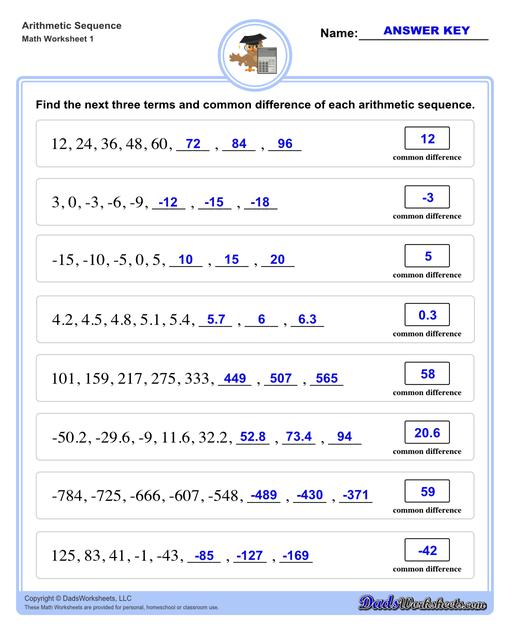
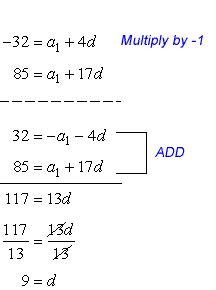



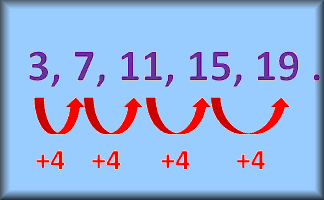
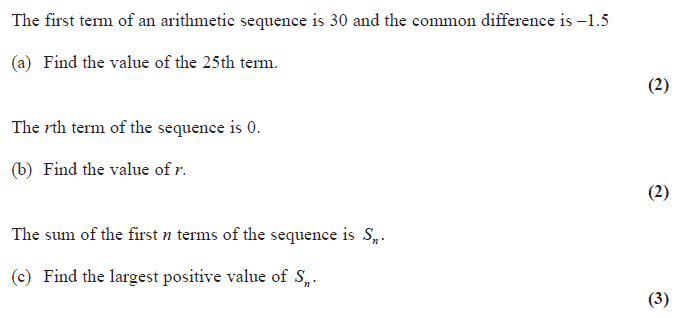
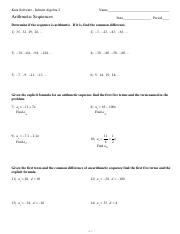

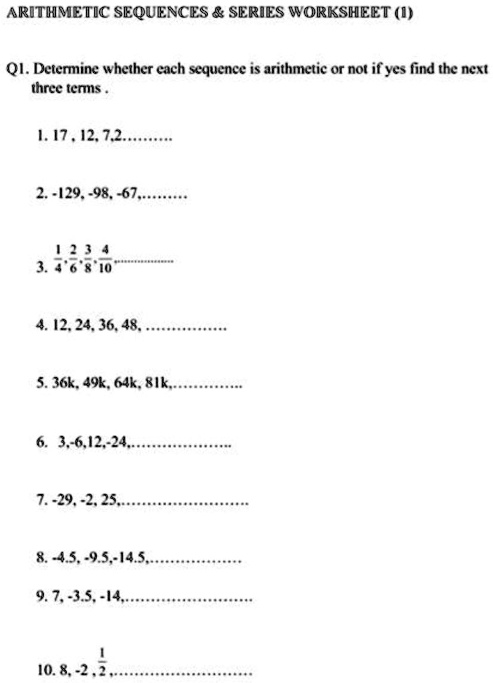

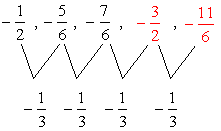
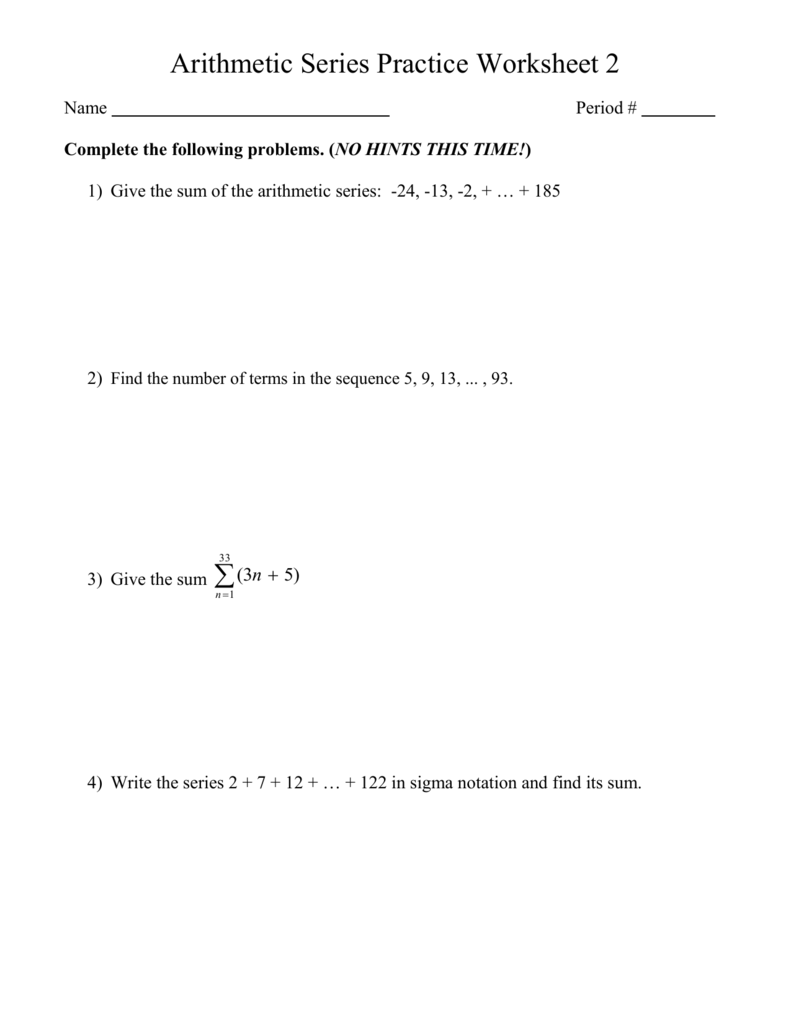






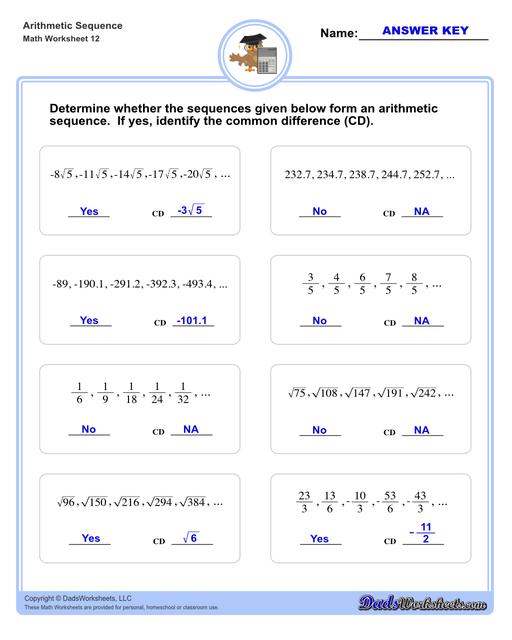

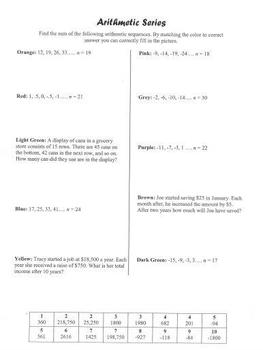
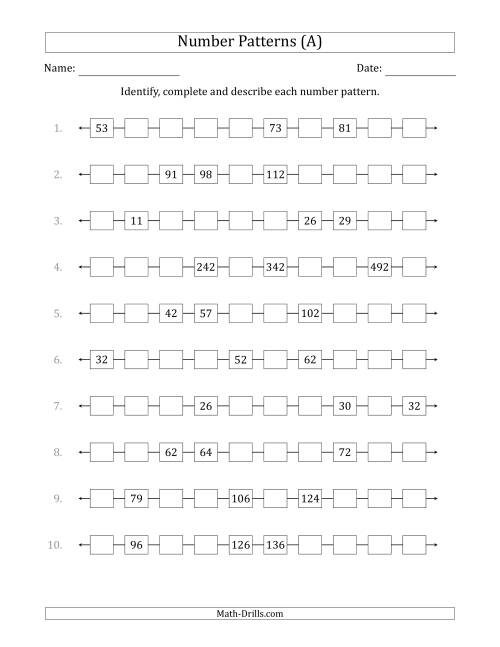
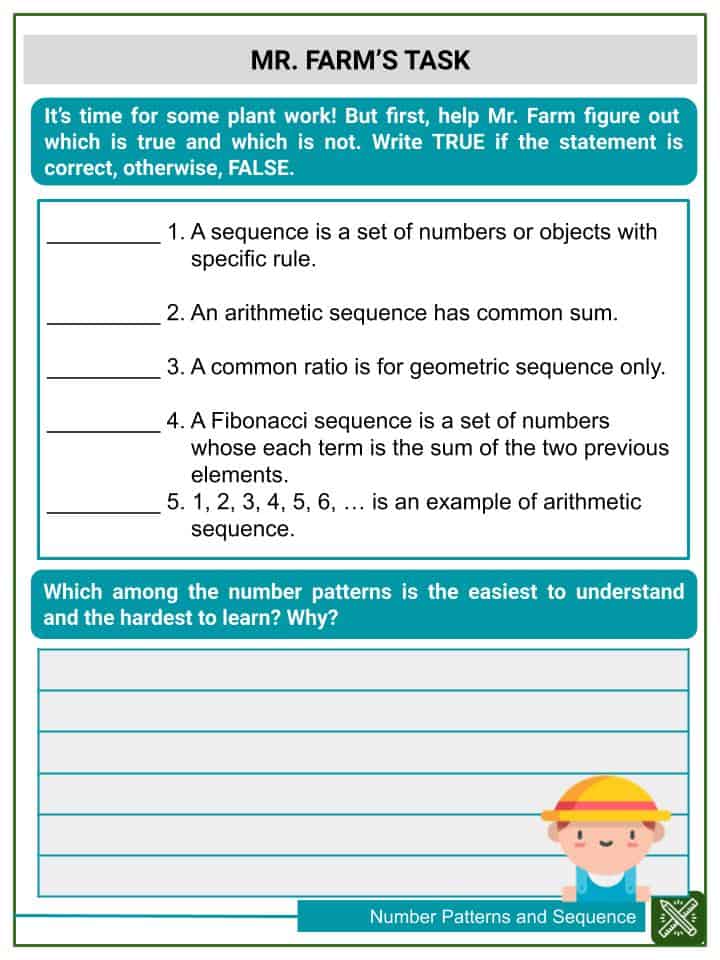


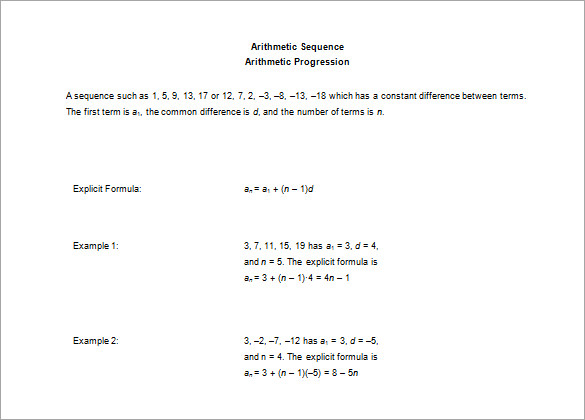
0 Response to "38 arithmetic sequence practice worksheet"
Post a Comment